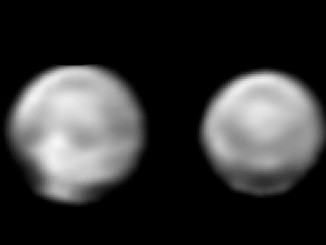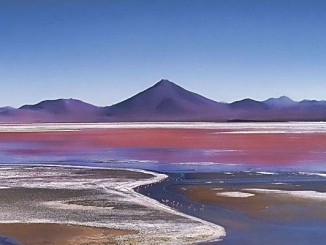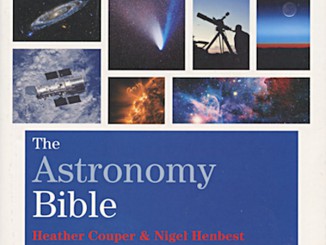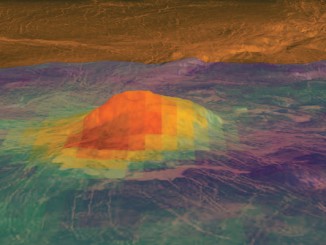
Articles by Astronomy Now


New Horizons sees Pluto’s close approach hemisphere and Charon’s ‘dark pole’
NASA’s New Horizons spacecraft doesn’t pass Pluto until July 14th — zipping by about 7,800 miles (12,500 kilometres) above the surface of the dwarf planet after a journey of almost 3 billion miles — but the mission team is making tantalising new discoveries as the piano-sized probe bears down on the Pluto system.



The mysterious ‘lakes’ on Saturn’s moon Titan
Titan is home to seas and lakes filled with liquid hydrocarbons, but what forms the depressions on the surface? A new study using data from the joint NASA and European Space Agency (ESA) Cassini mission suggests the moon’s surface dissolves in a process that’s similar to the creation of sinkholes on Earth.

The Astronomy Bible
Small, chunky and handy enough to be stuffed in a rucksack for quick facts and tips on the go, six of the book’s eight chapters cover the Solar System, the remainder being devoted to all that lies beyond. An easy-reading book that won’t swamp the reader with complicated terminology and a waffling narrative, writes reviewer Kerry Hebden.

Introducing the Planets and their Moons
An excellent summary of the planets with the right amount of facts, writes reviewer Ian Welland. It uses a geological approach and each chapter deals with specific topics rather than being devoted to one planet in turn. “A super value book that will appeal to more than the beginner or younger reader,” he says.


Hot lava flows discovered on Venus
The European Space Agency’s Venus Express spacecraft has found the best evidence yet for active volcanism on Earth’s neighbour planet. Seeing the planet’s surface is extremely difficult due to its thick atmosphere, but radar observations by previous missions to Venus have revealed it as a world covered in volcanoes and ancient lava flows.

Brightest early galaxy likely to contain first generation stars discovered
Astronomers using the several of the largest telescopes on Earth and in space have discovered CR7, a galaxy three times brighter than the brightest distant galaxy in the early universe known up to now. The scientists also found strong evidence that examples of the first generation of stars lurk within it.
